From cruiseship to armed merchant cruiser and spy catcher….
- Home
- World War I Articles
- From cruiseship to armed merchant cruiser and spy catcher….
The ship that was HMS Viknor was built in 1888 as a passenger liner, the ‘Atrato’, for use on routes between Britain and the West Indies. In 1912, she would be renamed as the ‘Viking’ and was used for cruising. However, on the outbreak of war, she was requisitioned by the British Admiralty, renamed ‘HMS Viknor’ and armed as a merchant cruiser tasked with patrolling between Iceland and Northern Scotland.

Above: the vessel as the Atrato

Above: Viknor from War Illustrated
With a maximum speed of 17 knots, manned mainly by members of the Royal Naval reserve, including 25 seamen of the Newfoundland Division of the RNR, the Viknor had headed out to the North Sea as Admiral Jellicoe wished to strengthen the blockade of Germany by the northern patrol. On 8 December 1914, a message was flashed to the fleet that SS Bergensfjord was deemed to be a prize to be captured at all costs as British Intelligence suspected that German reservists had joined her in New York.
Early on Monday 11 January 1915, the Viknor sighted a ship to the north-east of the Faroe Islands. This turned out to be the Bergensfjord. After the firing of a rocket across its bows and then the firing of a live shell, the Viknor was able to send a boat with a landing party to the ship. During a search of the Bergensfjord, two stowaways and six German passengers were found. One of these – a Mexican named Rosato Spiro – later admitted to being Baron Hansvon Wedell. Von Wedell had devised a plan to have American longshoremen, sailors and street bums in the New York environs apply for American passports. Once they had the passports, von Wedell purchased the passport from them for a small amount of money, usually from ten to twenty-five dollars. It was a great scheme and worked well until some of the street-smart individuals realized what was happening and attempted to blackmail von Wedell for more money. American authorities got wind of the scam and began to investigate but Von Wedell left for Cuba before they had a chance to identify him. Although the FBI had searched the Bergensfjord before it left New York, they had missed Von Wedell, who was onboard.
However, on 11 January 1915, Von Wedell was identified as being on board the Bergensfjord as indicated in the entry in that ship’s logbook:
‘All male first and second class passengers were gathered in the first-class dining saloon and their nationality inquired into.
About noon, the boarding officer of the Cruiser —— (English) went back and reported to his ship. About 0:45 P. M. he came over with orders again to take off six German stowaways and two suspected passengers. These passengers were according to ship’s berth list as follows:
- Rosato Sprio, Mexican, Destination Bergen, Cabin 71, second-class....
Rosato Sprio admitted after close examination to be H. A. Wedell. Claimed to be a citizen of the United States....
Dr. Rasmus Bjornstad claimed to be a Norwegian....
As both passengers apparently were travelling under false pretense, the Captain did not feel justified to protest against the detention of the two passengers. These were accordingly ... taken off and put on board the Auxiliary Cruiser ——.’
HMS Viknor radioed the good news and then headed south towards Liverpool.
Just two days later, Viknor was just off Tory Island, heading for the North Channel and home. But the last to be heard from her was at 1600 hours on 13 January 1915….and on the night of 13 January 1915, the ship disappeared off Tory Island. The cause of her loss was never ascertained but was thought to be either bad weather, or hitting a German mine, or both.
The entire crew of 295 – 22 officers and 273 men - were lost with many of the bodies washed ashore in the days following. This included the ship's captain, Commander Ernest Orford Ballantyne who came from Dalkeith, near Edinburgh. His funeral was reported in great detail by the local press.
‘The scene at the funeral was one such as was probably never before witnessed in Dalkeith and certainly not for many years. From Eskbank Toll to some distance below the cemetery entrance, both sides of the thoroughfare were densely lined with spectators. Many of these had come from outlying districts and it is computed that the assemblage between the points indicated would number four thousand persons….the coffin, of polished ash, with heavy brass mountings, was borne to a gun carriage by a party of blue jackets from HMS Indomitable. It was shrouded in the Union Jack and covered with beautiful wreaths sent by relatives, officers and men in the Navy, and other friends’.
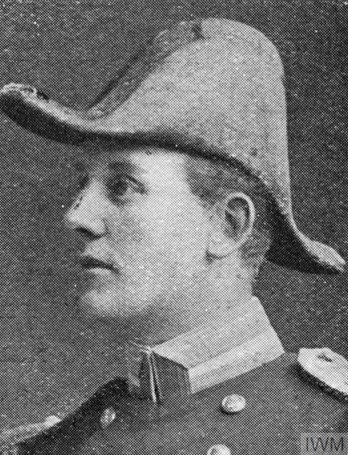
Above: Commander Ballantyne

Above: Ballantyne’s funeral
A number of those lost from the Viknor are buried in Ballintoy and Rathlin Island.
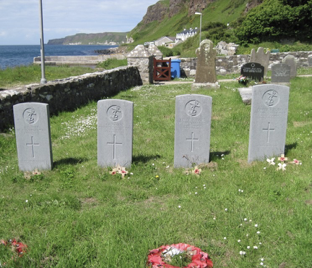
And there are many Pension Cards for those lost -
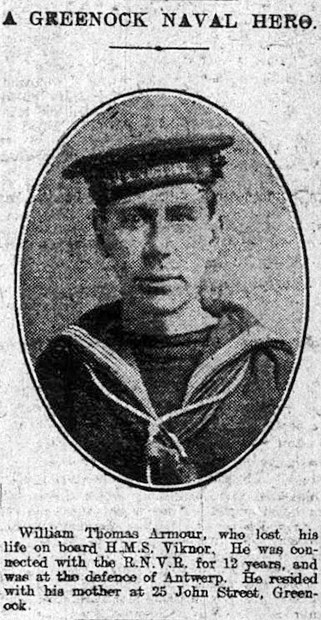
Above William Armour
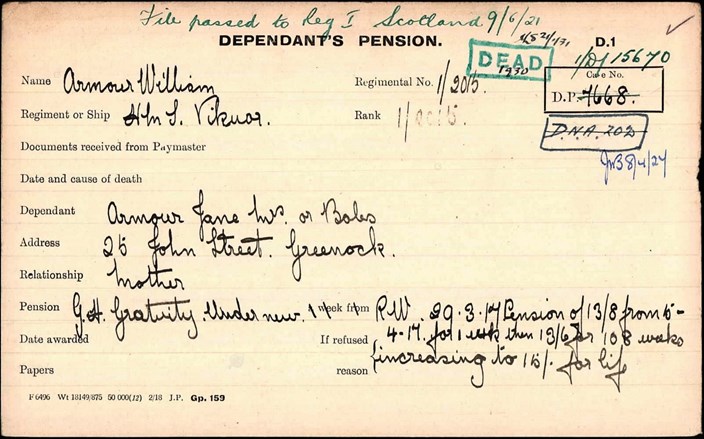
One of the youngest members of the crew to be lost was Ernest Roye Hewitt, who was only 17 years old.

Above: Ernest Hewett’s headstone.
Ernest Roye Hewitt was the third son of Ada and Alfred Hewett. The eldest son in the family, Ralph, had died on 18 December 1914. Their second son died of malaria in Salonika on 21 July 1916.
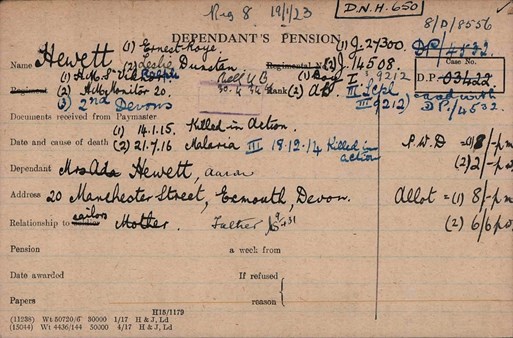
There are many more casualties of HMS Viknor to remember on this day –
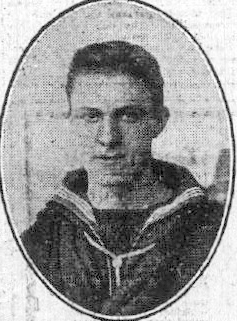
Scott Leavey

AB George Townsend
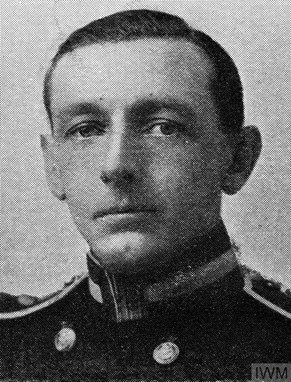
Surgeon Vernon Matthews
In 2006 the survey ship Celtic Explorer located the wreck of HMS Viknor.

The bow of HMS Viknor

The stern of HMS Viknor
Images from MaritimeQuest.com
The wreck lay at the outer edge of a minefield laid by SMS Berlin, lending some credibility to the theory that she could have hit a mine, but to this day there is no definitive answer as the cause of her loss.
Article by Jill Stewart





